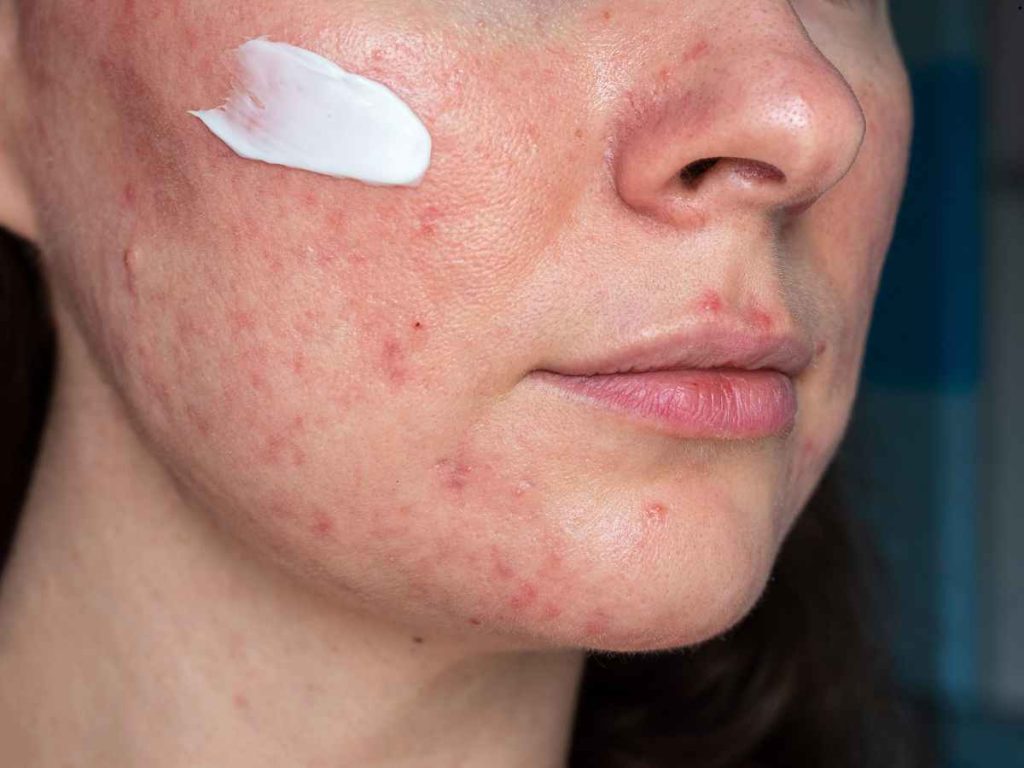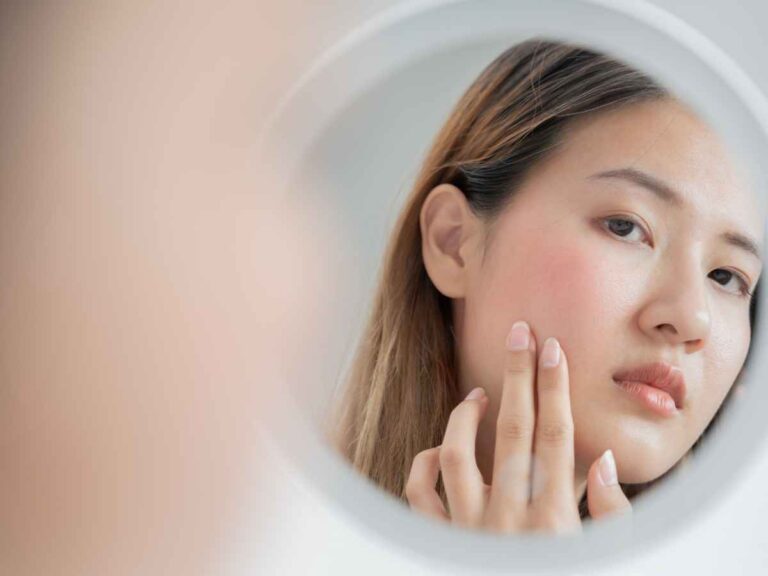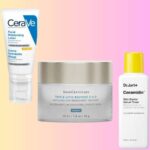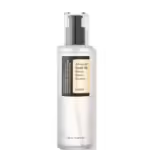This post contains affiliate links. For more information, see my disclosures here.
Table of Contents
Alright folks, let’s dive right into this rosacea thing, shall we?
Picture this: You’re just going about your day, everything’s dandy, but then—bam!—you take a look in the mirror and it hits you.
Red, flushed, irritated skin, along with a few of those nasty pimple-lookin’ things.
No, you’re not turning into a tomato.
You’ve got rosacea.
In case you’re asking—what the heck is rosacea?
Lemme break it down for ya.
Rosacea (pronounced “ro-zay-sha”) is a common skin condition that primarily affects the face.
We’re talking redness, swelling, pimples, and small, visible blood vessels.
Ain’t it a picnic?
Dr. Jane Doe, a leading dermatologist says, “Rosacea, while common, is often misunderstood. It’s a chronic disorder of the facial skin often characterized by flare-ups and remissions.”
Erythematotelangiectatic rosacea
Roll out the red carpet—for your face that is! ‘Cause that’s what erythematotelangiectatic rosacea (ETR) feels like.
But let’s forget about trying to pronounce it, we’ll stick with ETR, okay?
Pop quiz—What’s the main feature of this type of rosacea, you ask? (Besides the glamorous name that sounds like it was dreamt up at a Star Trek convention, of course.)
The simple answer, my friend: redness, lots of it. And your skin’s not just blushing from flattery, nope.
It’s a consistent and persistent redness that sometimes comes with visible, broken blood vessels (telangiectasias, if you wanna get technical).
Does it sound like the Hulk decided to camp out on your face?
Well, ETR often feels like it too.
And just like you can’t reason with a giant green superhero, you need to handle ETR with care—and the right products.
Reining in the Red—Treating ETR
So, what’s the magic potion to tame this unwanted facial flush?
Well, I’m here to drop some knowledge on that.
Not all products are created equal, and some can make ETR head for the hills while others can bring the Hulk roaring back in.
Number one on our hit list is sunscreen.
It’s your facial shield in the battle against UV, a known trigger for rosacea.
But not just any dime-a-dozen sunscreen.
You want a zinc oxide-based one to protect you from UVA and UVB rays.
EltaMD UV Clear Broad-Spectrum SPF46 and Neutrogena’s Sheer Zinc Face Mineral Sunscreen are high-fliers in this category.
Moving onto the next champ—soothing cleansers.
You want to clean your face, not wage war on it.
Ingredients like niacinamide and ceramide (like in CeraVe Hydrating Facial Cleanser) can help reinforce your skin barrier and dial down inflammation.
ETR’s Not-So-Friendly Faces—Products to Sidestep
Now, we can’t talk about the good without dishing the dirt on the bad.
Stuff to avoid includes harsh ingredients like alcohol, witch hazel, menthol, eucalyptus oil, or any fragrances.
These guys are like throwing a keg party for your rosacea—straight up inflammatory havoc.
Repeat after me: No house parties on my face.
Remember, treating rosacea is about finding what works for you.
It’s more of a marathon than a sprint.
Buy it, try it, and see what soothes your skin.
Above all, don’t stress too much.
After all, you’re not alone in this.
Heck, if it’s good enough for Bill Clinton and Prince William, it’s good enough for us, right?
Papulopustular rosacea
We’re here, folks—upon the ground of Papulopustular rosacea, or let’s just call it the tricky terrain of ‘acne rosacea’.
It’s the stage where rosacea decides to go all teenager on us and starts sprouting bumpy pustules and pimples.
Your face be like, “Cool, cool, but who signed me up for this second ride on the puberty roller coaster?”
Unclogging P&P—Treatments that work
Look, the good news is—the acne rosacea isn’t untreatable.
Nope!
Dermatologists often recommend topical treatments—retinoids, benzoyl peroxide, azelaic acid, and the like. “But hold up,” I hear you say. “Ain’t retinoids like throwing fuel on the Rosacea fire?”
Normally, yeah. But low-dose retinoids work a treat for P&P by making your face less oily (which is like, Rosacea enemy numero uno).
Also, oral antibiotics are an option for stubborn cases—doxycycline, tetracycline, or erythromycin could do wonders.
The P&P No-no Zone—Stuff to dodge
Listen up, sunshine, because your skin’s about to thank you.
When you’ve got Papulopustular — P&P for us cool cats — rosacea, there’s a pack of products you gotta avoid like the plague.
We’re talkin’ anything and everything that’s got alcohol up in its business (ouch!), heavy fragrances (sniff, sniff—pass), and skin-drying nasties like witch hazel or eucalyptus (they’re bad dudes, trust me).
Now, I ain’t whispering sweet nothings in your ear about panic. All I’m saying is know your enemy, alright?
These bad boys are notorious for causing flare-ups, turning your chillaxed skin into a red-hot mess faster than you can say “careful with my complexion!”

Phymatous rosacea
Alright, y’all— let’s talk about phymatous rosacea.
It’s like the villain of a superhero movie—it’s mean, looks bad, and definitely isn’t afraid to show its ugly face!
But, just like every villain’s downfall, it also has a weakness that can be exploited.
Therapy, my friends, is our superhero!
Laying the Smackdown—Tackling Phymatous
Remember folks, a dedicated streak and an awesome doctor are your trusty sidekicks when battling this skin nemesis.
It’s all about popping lasers and going under the scalpel—yes, we’re talking dermabrasion, laser therapy, and even surgical interventions (when necessary).
These treatments can do a bang-up job of reducing the thickened skin and uneven texture that this baddie loves so much.
Steer Clear Space—Products Phymatous Hates
Like that infamous bar of soap you used when you were a teen that just made your skin go haywire (realm flashback, huh?).
Some products can aggravate phymatous rosacea.
We’re talking alcohol-based stuff, witch hazel, menthol, peppermint—you know, typical ‘bad guys.’
Stay away from these and give your skin the nourishment it deserves.
Be smart— irritated skin is not in fashion, folks!
.Bottom line, treating phymatous is about patience, persistence, and product know-how.
Be sure to consult with your doc and follow a treatment plan that suits your skin. You got this!

Ocular rosacea
Here’s the thing, my friends—ocular rosacea ain’t no walk in the park.
It’s like a kinda nasty, unwanted houseguest, hanging out in your peepers, causing redness, sensitivity, and often giving the impression you’ve pulled an all-nighter when you have, in fact, clocked in a solid eight hours (rude, right?).
But I’m not just here to bring you down, oh no—I come bearing solutions!
Since we’re dealing with the delicate eye area, you’ve gotta take a chill approach with treatment.
Artificial tears, flaxseed supplements and warm compresses are your new BFFs—they can help keep your eyes lubricated and cozy.
Broad-spectrum sunnies are also a must-have. Protect those babies from harming UV rays, will ya?
The Eyes Have It—Products to Embrace
Hot tip: When it comes to choosing skincare products—think gentle, soothing vibes.
Your usual retinol and acid-laden potions? Not your pals right now.
You need to embrace brands that specialize in sensitive skin like CeraVe, La Roche-Posay, and Aveeno.
They’ll treat you right, I promise.
Pulling the Blinds—Products to Avoid
Guess what you don’t need when it comes to ocular rosacea?
Any product known to irritate the skin—so step away from anything with harsh ingredients like alcohol, witch hazel, menthol, or fragrance.
And that random face mask you picked up from the $5 bargain bin at your local drug store?
Hard pass, darling. Remember, sensitive skin is delicate—you gotta treat it like a diva.



